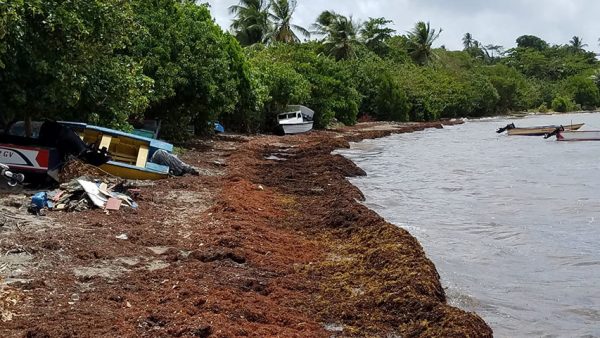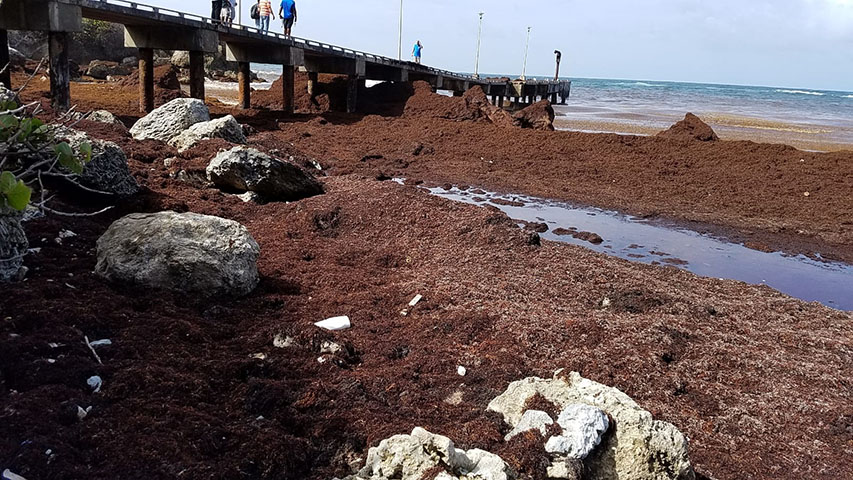Unprecedented amounts of seaweed which surfaced on Caribbean shores last year has seen the Caribbean Regional Fisheries Mechanism (CRFM) initiating a regional fact-finding study to document the impacts this phenomenon has been having on countries in the region since 2011.
The fact-finding survey is funded by the Japan International Cooperation Agency (JICA).
A release from the CRFM on Friday said that over the past seven years, massive Sargassum influxes have been having adverse impacts on national and regional economies in the Caribbean, with substantial loss of livelihoods and economic opportunities, primarily in the fisheries and tourism sectors.

It said that large Sargassum influxes were experienced in 2011, 2014 and 2015, but it reached unprecedented levels in 2018, with more Sargassum affecting the Caribbean for a longer period of time than had previously been observed.
The release said that it is estimated that clean-up could have cost the Caribbean at least $120 million in 2018. The CRFM Ministerial Council adopted the “Protocol for the Management of Extreme Accumulations of Sargassum on the Coasts of CRFM Member States” in 2016 and this has been guiding the drafting of national protocols for Grenada, St. Kitts & Nevis, St. Lucia, and St. Vincent and the Grenadines, with support from the CC4FISH project, an initiative of the United Nations Food and Agriculture Organisation (FAO).
In the coming weeks, the release said that the CRFM Secretariat will lead extensive consultations with key national stakeholders in the public and private sector, including interests in fisheries, tourism, and environment, as well as with coastal communities.
Through the project, the CRFM will identify heavily affected areas, the time and frequency of extreme blooming and accumulation of Sargassum, the quantity of accumulation, and elements associated with it, such as the species of fish and types of debris. A review of the history and scope of the impacts (both positive and negative) will be conducted and the extent of financial losses determined. The CRFM will also identify research and countermeasures taken by the national governments, regional organizations, research institutions, and other development partners. Finally, the study will suggest actions and the scope of support that Japan may provide to help the countries address the problem.
According to the CRFM, Sargassum influxes disrupt fishing through gear entanglement and damage; impeding fishing and other vessels at sea; lowering catches of key fisheries species, such as flyingfish and adult dolphinfish; modifying the availability and distribution of coastal and pelagic fisheries resources; and disrupting coastal fishing communities and tourism.
The challenge has also inspired innovative interventions and opportunities for revenue-generation include value-addition through the production of fertilizers, pharmaceuticals, animal feed, and biofuel. The CRFM noted, though, that the financial or other benefits remain to be quantified.
The release said that the Sargassum phenomenon is believed to be driven by several factors, including climate change and increased sea surface temperature; change in regional winds and ocean current patterns; increased amounts of Saharan dust; and nutrients from rivers, sewage and nitrogen-based fertilizers.





